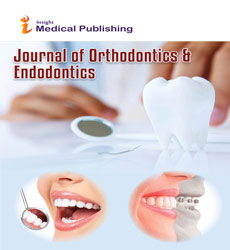Abstract
Association and socioeconomic status and caries among Chinese preschool children: A cross-sectional national study
Objectives: To assess the association between child caries status and socioeconomic status (SES) in China. Methods: Data from the 4th National Oral Health Survey of China, which was done in 2015. The sampling process was conducted by a multistage stratified cluster method, comprising of 40,360 children aged 3-5 years. Caries indicators included untreated caries, dental pain and dmft (number of decayed, missing and filled teeth). SES was measured by parental education level and household income. The bivariate association between the participants’ characteristics and dmft was analyzed using non-parametric tests, while the untreated caries and dental pain were analyzed using Pearson’s chi-square tests. Negative binomial regression and Poisson regression models were used to analyze association between SES and oral health by regulating confounders. Results: There were significant associations between SES and all oral health indicators (p<0.05). And the trends of oral health for different SES remained significant. The prevalence of untreated caries, dental pain and dmft of children from the lowest parental education were 1.19, 1.10 and 1.19 times higher than those from the highest parental education. And the prevalence of untreated caries, dental pain and dmft of children from the lowest household income families were 1.12, 1.11 and 1.24 times higher than those from the highest household income families. Conclusions: There were consistently wide socioeconomic inequalities in child oral health in China, posing challenges for designing public health strategies and social policies.
Author(s):
Xiaojuan Zeng
Abstract | PDF
Share this

Google scholar citation report
Citations : 265
Journal of Orthodontics & Endodontics received 265 citations as per google scholar report
Abstracted/Indexed in
- Google Scholar
- China National Knowledge Infrastructure (CNKI)
- Cosmos IF
- Directory of Research Journal Indexing (DRJI)
- WorldCat
- Geneva Foundation for Medical Education and Research
- Secret Search Engine Labs
- Euro Pub
Open Access Journals
- Aquaculture & Veterinary Science
- Chemistry & Chemical Sciences
- Clinical Sciences
- Engineering
- General Science
- Genetics & Molecular Biology
- Health Care & Nursing
- Immunology & Microbiology
- Materials Science
- Mathematics & Physics
- Medical Sciences
- Neurology & Psychiatry
- Oncology & Cancer Science
- Pharmaceutical Sciences

